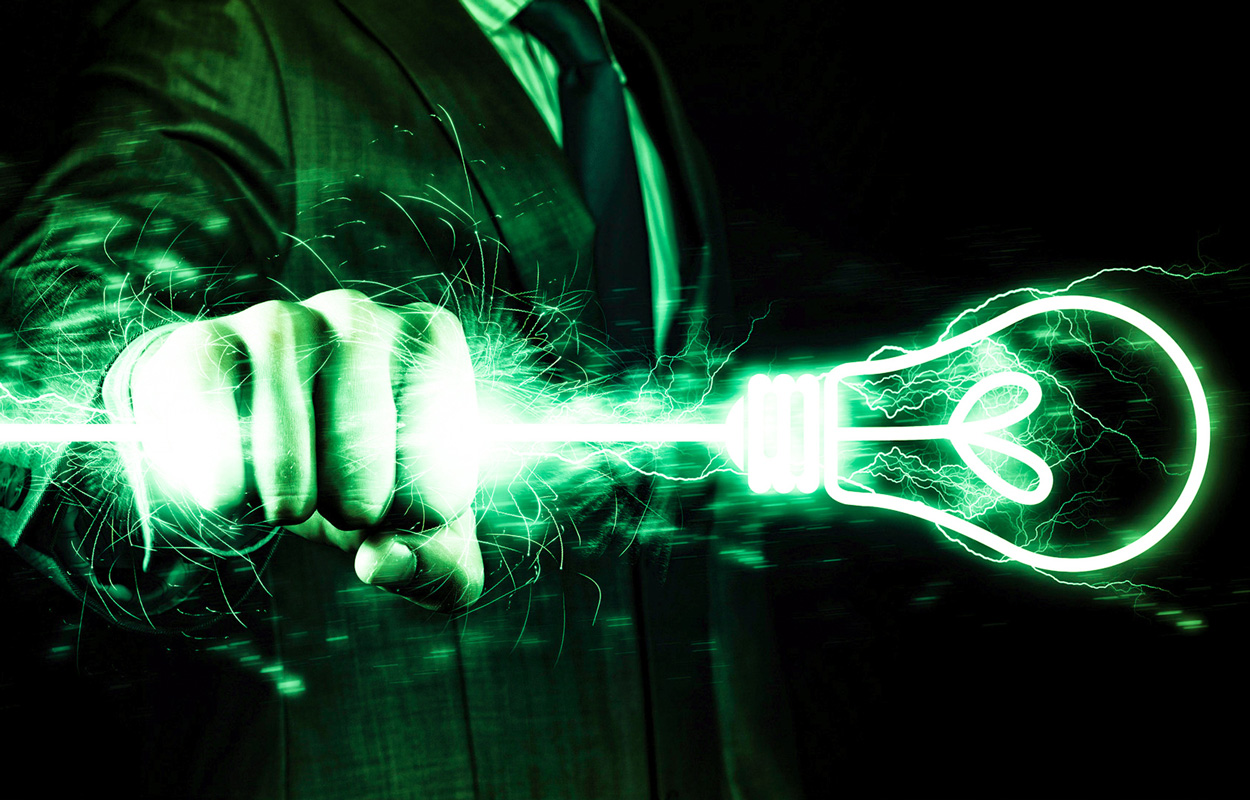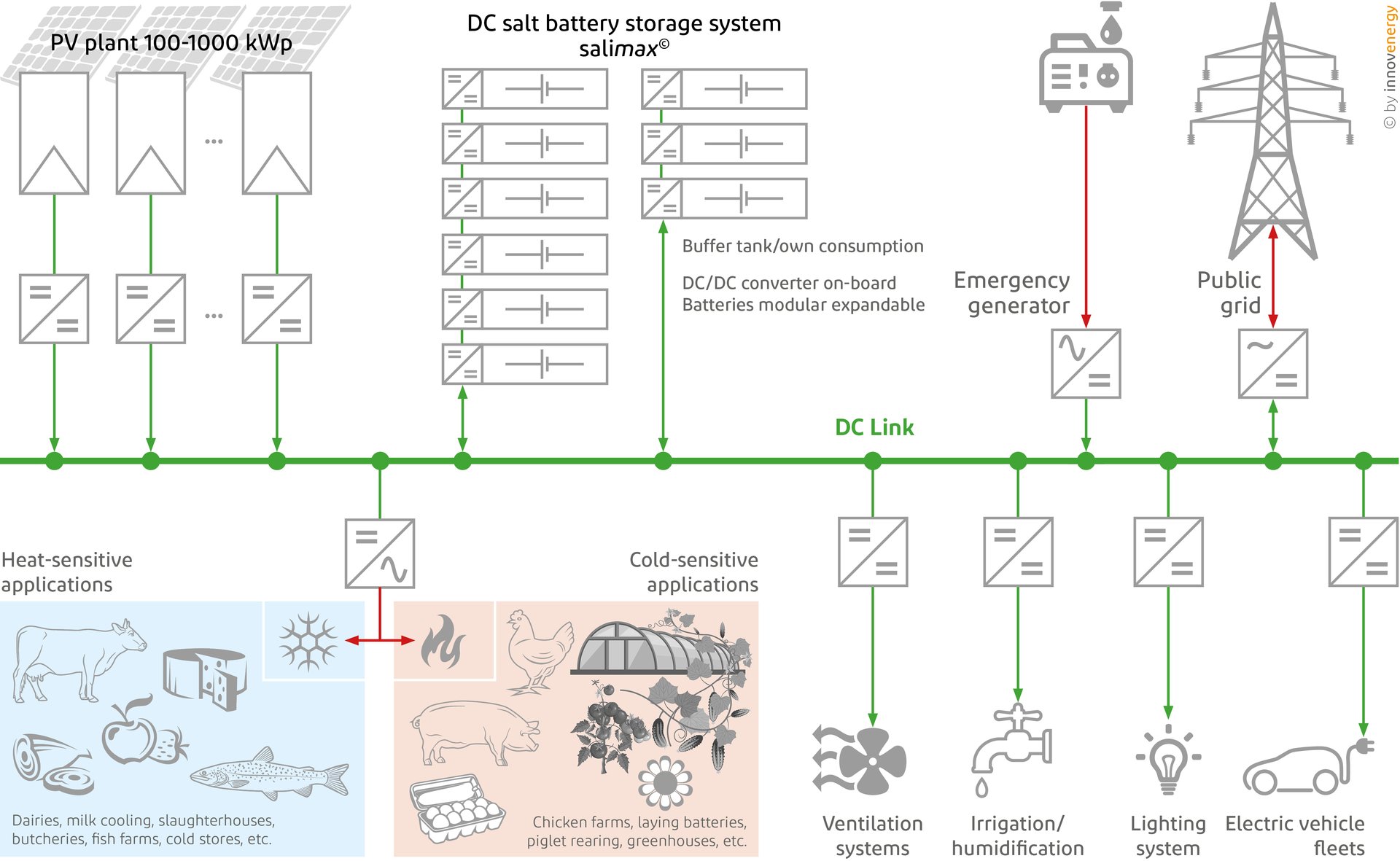Boiling energy markets – Exploding electricity prices!
Electricity is getting more and more expensive and there is no end in sight. The fields need to be irrigated. Cows have to be milked. The slurry mixer has to turn. The rearing needs to be warm. The hay blower has to run. These are all necessities that cost expensive electricity. Only half of large agricultural roof areas are covered with photovoltaics because the grid connection capacities for more solar energy are too low. Thus, the future topic of agri-photovoltaics can only be implemented to a limited extent. In contrast to the purchase prices, the feed-in tariffs are getting lower and lower. And many are now falling out of the EEG subsidies. How can all this still be profitable?
This article is divided into two topics:
SALT BATTERY STORAGE SYSTEMS
Salt battery storage as an alternative solution
The solution is not only to produce electricity yourself, but also to store the surplus. There is nothing new about balancing self-consumption in the morning and evening hours with battery storage. However, current obstacles are long delivery times, questionable raw materials, explosion and fire hazards, environmental incompatibility and no guaranteed recycling.
Things are different with the salt battery from Switzerland. It is absolutely safe, ecological and sustainable. A salt battery consists mainly of common salt and nickel. Due to the production within Europe, these harmless salt battery storage systems can be delivered within a few weeks in different capacity sizes as well as performances - optimised for agricultural needs.
How the salt batteries work
The molten salt battery is based on an active material composed of common salt and nickel. The battery reaches its operating temperature at 260 degrees Celsius and can then be charged and discharged. A sodium-ion conducting ceramic separator separates common salt and nickel from the metallic sodium, the reaction product of the charged battery. When discharging, common salt and nickel are produced again.
The high temperature of the molten salt is completely harmless, as the battery is very well insulated and only lukewarm on the outside. If a battery cell is damaged, the two substances flow into each other and common salt and aluminium are formed. There is no leakage, no burning, no exploding. The salt battery is completely safe, non-toxic and harmless. An essential point for storage systems everywhere where the motto "safety" is very important.
More info on salt technology
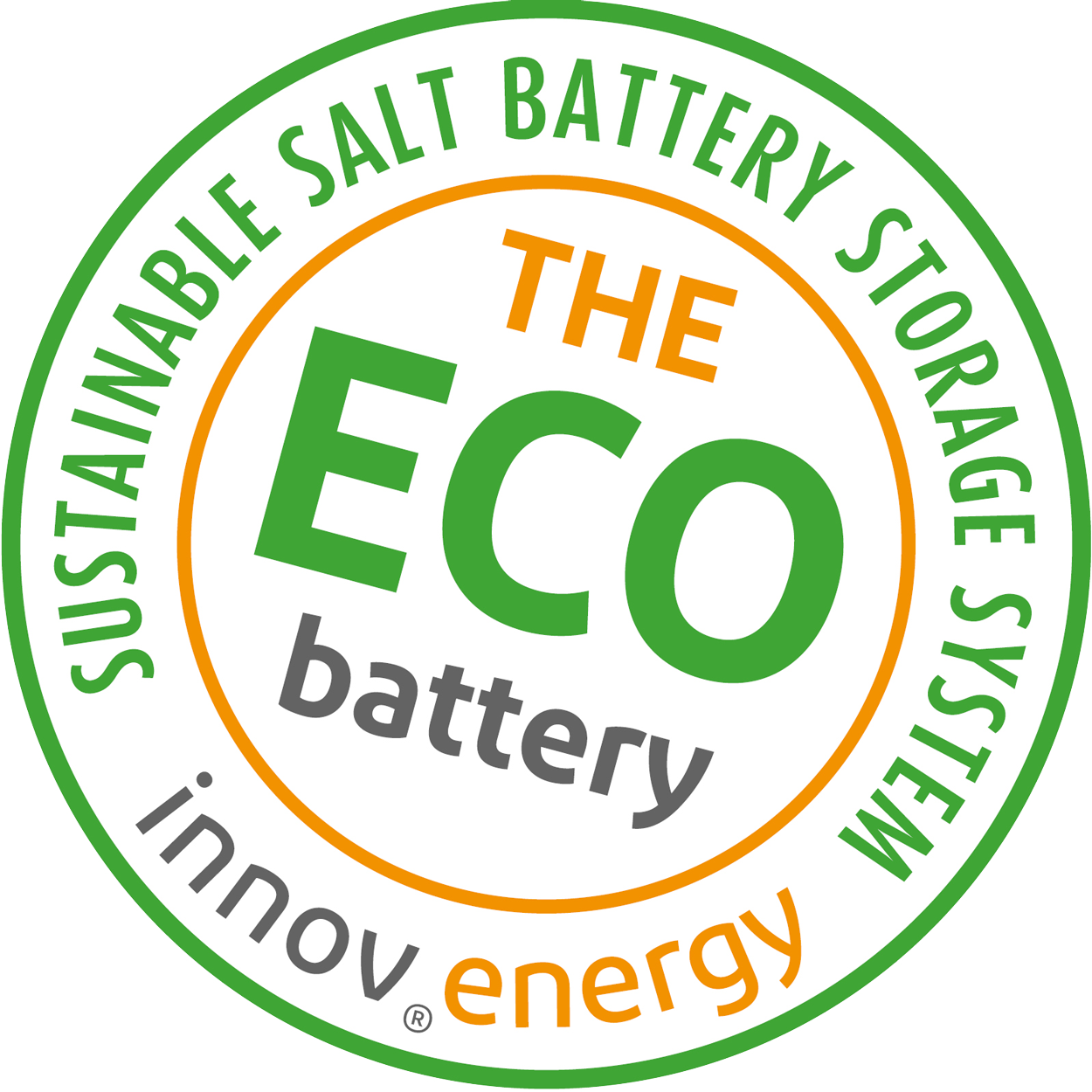
Sustainability of salt battery storage
Sustainability of salt battery storage
The three dimensions of sustainability – environment, society and economy - come together in innovenergy's salt battery storage systems. The salt batteries are 100% recycled: the manufacturer takes back the discarded batteries and really everything is reused.
An economically sustainable product should be long-lasting. The salt battery has a lifespan of 15 years and more. It is extremely robust and works within an outdoor temperature range of -20 to +60 degrees Celsius. It can therefore be used in agriculture even in unheated rooms.
More information about the properties of a salt battery
For whom are salt batteries suitable?
There are three areas of application for salt battery storage systems: private home storage with interesting standard products from the salidomo© series as ready-made all-in-one complete systems, commercial storage for medium and larger photovoltaic systems in modular racks, and large industrial applications up to the megawatt hour range.
Energy and climate change
We all know: If humanity wants to mitigate the dramatic consequences of global warming, the global energy supply must be radically transformed over the next 30 years. Renewable energies are the core of this, but produce all too unreliably. Without storage, renewables are largely useless. Calls for ecological storage media have been increasing for years. The salt battery meets many of these calls for sustainability. Storing green electricity in eco-batteries – a round thing!
Online webinars are also offered.
For questions or advice, contact one of our sales partners in your area.
PRIVATE DC-GRIDS
Energy-efficient private networks
It becomes even more interesting when setting up a small direct current grid of one's own. This makes it possible to fully expand photovoltaics even with limited grid connection capacity and to maximise one's own demand both on the DC side and on the AC side. In such a self-regulating DC grid, producers and consumers balance each other out – electricity production automatically adjusts to consumption. This means that the grid connection capacity is not overloaded.
The energy transition is taking place in the countryside
Agri-photovoltaics, the combination of food and energy production, becomes possible with a DC grid at high voltage even over long distances. Depending on the design of the system, the farm becomes self-sufficient, more efficient and can also sell electricity. This means double cultivation of the agricultural area and thus a double harvest through agricultural production plus "electricity farming" with a simultaneous reduction in electricity costs. Agri-photovoltaic systems also offer the possibility of supplying electricity to the public grid at the push of a button, depending on requests.
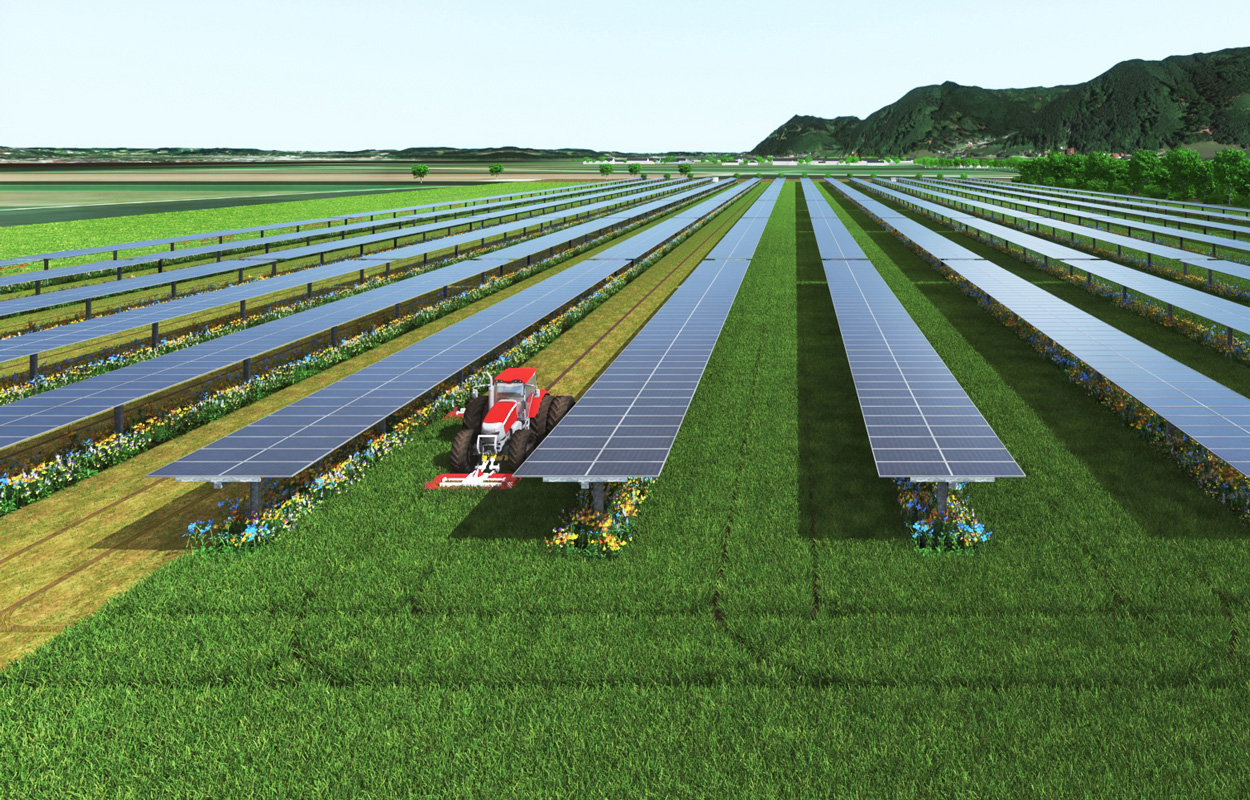
Example of grassland management | © EWS Consulting GmbH/ews-sonnenfeld.com
Such a private DC grid is a DC infrastructure on which all DC producers (e.g. PV) and DC consumers (e.g. battery when storing) are connected via a DC cable (DC link). The efficiencies of DC power electronics are unbeatably high. A bidirectional inverter connects the AC world with the DC world. Conversion losses between repeated AC and DC conversions are eliminated. In addition, the problem of low-power AC grid connections for very large photovoltaic systems is circumvented – also to the delight of grid operators.
Finally, you can fully expand your photovoltaic system and use all the electricity yourself. With appropriate frequency converters, it is also possible to supply your stationary electric motors directly via DC current.
Direct current (DC) instead of alternating current (AC)
The photovoltaic systems on the roofs produce direct current. A battery storage system also processes direct current, as do the electric cars. But most consumers such as the household, milking equipment and milk cooling, barn heating and ventilation, incubators or automatic feeders etc. need alternating current. So the current has to be changed several times from DC to AC and back to DC. These alternating losses account for about ten percent of the electricity. This is much more efficient!
More information on DC grids.
Energy efficiency through direct integration
In a so-called DConnect© by innovenergy, the photovoltaic systems are directly connected to the salt battery storage system and other connected consumers via a DC cable, the DC-Link. Highly efficient DC/DC converters with an efficiency of 99.5 % can feed the energy of several distributed solar systems into the DC-Link and from there store it directly in a battery system. Heat pumps, refrigeration machines and other machines with electric motors from agriculture can also be supplied directly from the DC link with frequency converters. Here, too, conversion losses are reduced to a minimum.
More info on the DConnect©.
Emergency power supply free of charge
Especially for milking robots, hatcheries, fresh air supply or other sensitive environments, a power failure could have catastrophic consequences. An uninterruptible power supply is included as standard in a DConnect© as well as in a salt battery storage system. A diesel generator can also be integrated as a backup for very long power outages – without mains synchronisation.
Future-oriented and cost-effective
Rising electricity costs in winter and falling electricity yields in summer are the challenges of the future. Above all, the country offers the opportunity to supply those amounts of electricity from renewable sources for the growing electricity consumption. A private DC grid keeps open the possibility for modular expansion. Financing can be done in stages. In addition, the DConnect© reduces the overall system costs. So there are possibilities that, despite exploding electricity prices, volatile energy markets and the failure of the Renewable Energy Sources Act (EEG), producing your own electricity will be profitable in the long term.
For questions or advice, contact one of our sales partners in your area.
